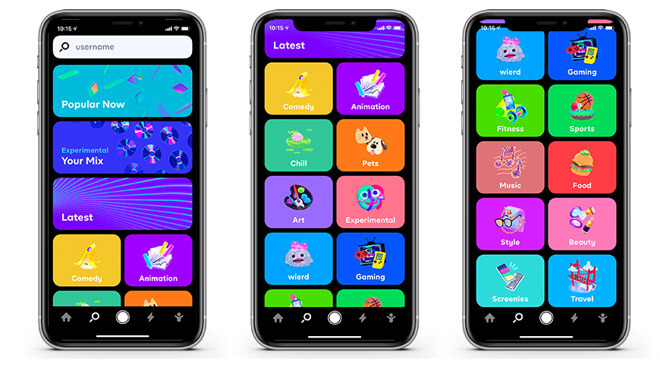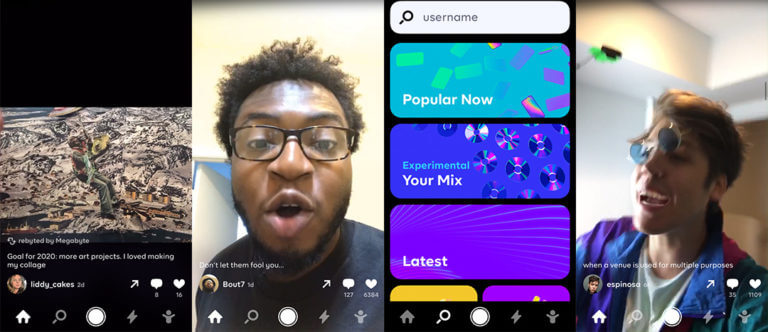For many of us, we’re now stuck at home with more time on our hands than ever. And considering many have a lot more time to spend on social media, we definitely are taking advantage of it. Social media is a platform for sharing important information to best protect ourselves, a place we escape to when the world is too much, and a vital tool for continuing to connect us to our friends and family.
Video sharing apps were incredibly popular, even before stay-at-home orders were in places. Now, users and usage time are growing faster than originally predicted, with TikTok leading the charge. It was already a hit with Gen Z and some brands and, now nearing a billion users globally, it is becoming a staple of people’s social media consumption. Instagram and Facebook have also expanded their video and live streaming capabilities as more people turn to social networks to keep in touch.
But, before TikTok reigned supreme there was another massively popular video app – Vine.
Vine took the world by storm when it launched in January 2013 and defined internet humor and culture for the entirety of the 2010s. Turn to your millennial friend or coworker and ask them what their favorite vine is. Even if they didn’t have the app itself, they probably know at least one of the popular 6 second clips. They were ubiquitous, shared and re-shared across multiple platforms for years.
Which is why when Twitter announced it was officially shutting Vine’s door in 2016, people were confused. It was a popular app, with a growing number of talented users on the platform that had become successful on other platforms as well. But the biggest problem that faced Vine was how to leverage it’s popular and viral content into a viable income strategy. Even with it’s massive popularity, they never managed to come up with a system for both advertisers and popular users to make the platform financially sustainable.
But does all of this have to do with Byte? Turns out, one of the original founders thought there was still a place for Vine, even in this TikTok dominated world, and set out to bring Vine into the new roaring 20s.
So what is Byte? Is it exactly the same as Vine was? How are they going to make themselves stand out in a much more crowded field? And how do they plan to make money this time?
A Byte of Background
Let’s start with the basics.
Byte was first announced by former Vine co-founder, Dan Hoffman, in November 2018 as a successor to Vine. After a period of beta testing by users invited to the platform, it officially launched to the public on January 24th, 2020 becoming the most popular app in its first week. While it may seem unsurprising, it shows that Vine’s popularity continued to hold strong even after it was officially closed in 2016 and that people are still hungry for short-form video content, even in a ‘byte’ sized format.
There is little that is surprising about Byte’s interface. Upon loading, you are met with your home page, which displays videos from anyone you follow as well as videos Byte thinks you would enjoy. The camera is also simple, with the ability to record and stop as you please though with the ability to delete the previous chunk you recorded. There is also now “Ghost Mode” which takes a screencap of your last frame and makes it slightly transparent in order to keep consistency between different takes. But other than those two new features, Byte appears to be picking up almost exactly where Vine left off in 2016.

Byte also continues to use Vine’s signature 6 second videos as standard, which is much shorter than TikTok’s 15 second allowance, although videos can be as short as 2 seconds if you really want a challenge. And while there are some cool features users can incorporate into their vids, Byte is still fairly stripped down compared to the more feature-filled TikTok or Instagram. While there is no doubt there are going to be updates to the platform over the coming months, it may also be a strategic decision to limit the number of tools users have access to.
Byte’s tagline is “Creativity First” and many early users have taken to that with gusto. Byte is planting it’s flag in the idea that their content will be all original and more self-contained than TikTok’s endless stream of dances. In fact, as some TikTok users moved to the platform and continued to post the content that does well there – music heavy commentary, dance videos, and the like – users on Byte have rejected it.
Many on Byte wish to keep it in the same style as Vine – less music and dancing and more comedy and short sketches – and work actively to keep that content popular, citing it as “keeping it creative.” And implying that TikTok is the exact opposite.
Overall, Byte is attempting to bring the style and culture of Vine into the 2020s by keeping the short format and limited editing tools but updating it to better match user expectations for video content today. And their early success shows that people are still interested in making and watching that kind of content.
Byte-ing Off More Than They Can Chew?
While Byte is definitely off to a good start, the real question is whether they can continue to grow. After all, the short-form video world is no longer limited to one app. Even excluding TikTok, other social media giants have moved into the short-form video format over the years in various ways. Snapchat, founded in 2013, pioneered the upright video format and Instagram and Facebook soon followed up with their own versions in Stories.
But Byte knows who it’s main competition is: TikTok. TikTok has risen to be one of the most popular apps in the world and largely built itself on similar kinds of content that Vine originally made so popular. But it also has built up a large community using music, dance, and other audio in order to make memorable and memeable content. In other words, the TikTok app works to make content easy to consume but also easy to riff on and repeat by its users – quintessential tools for making a long lasting meme.

Byte is viewing its growing community in a different way. They are not looking for users to create constant iterations of the same dance or meme over and over again. They want their users to fully lean into the old culture of Vine with it’s short skits and snappy edits. While they are steadily updating to include features that many have become accustomed to – text over video and looping music to name a few – they are working to maintain that distance from other video apps.
The Future of Byte
While Byte will probably never be the next TikTok, it is creating and nurturing a community all it’s own. There will always be people who miss the heyday of Vine and will be drawn to the app. Others will be turned off by TikTok’s origins and owners (the ironically named ByteDance, based out of China) and look for other platforms with similar vibes. But, are there enough people willing to give it a try? How successful with Byte truly become?
Time will ultimately answer those questions. But, it worth nothing that even the smallest communities can be a valuable place for marketing campaigns. Looking to target a specific niche? Byte may be a place to consider for an influencer campaign. Wanting to establish a competitive edge? Being one of the first brands on the platform will make you stand out and give you more time to test to find the best strategies.
We at LMS always believe in trying the latest trends, so we’ll be keeping a close eye on Byte and the potential it has to offer. What do you think about Byte? Do you think it will fizzle out quickly as it tried to compete with TikTok? Or do you think it brings something new and different to the table?
Let us know by reaching out on any of our socials: Instagram, Facebook, LinkedIn, or Twitter. Or, if you feeling old fashioned, feel free to email us at imgame@wearelms.com.